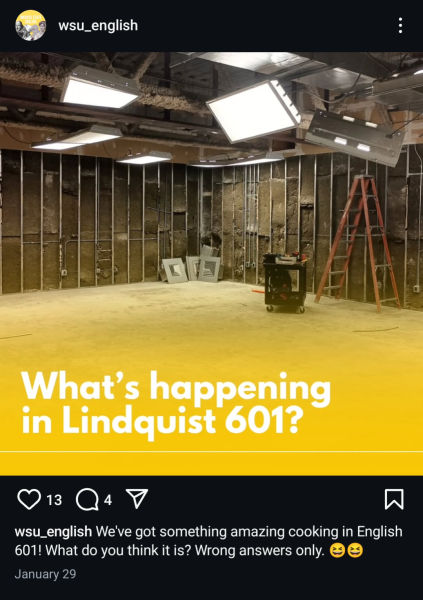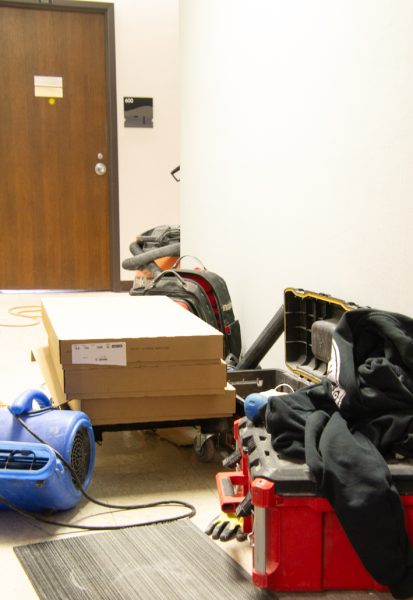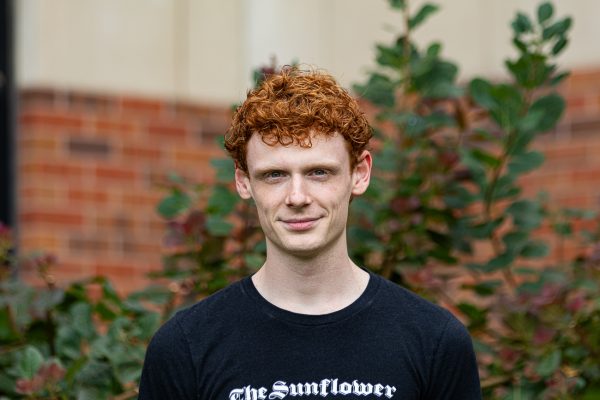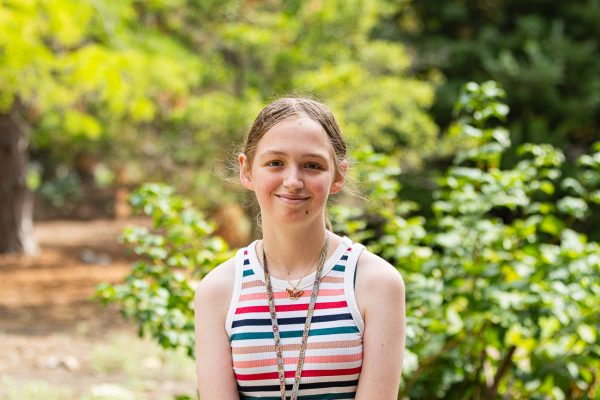
On Jan. 29, The Wichita State English department’s Instagram page posted a cryptic photo of a gutted room with the caption “We’ve got something amazing cooking in English 601! What do you think it is? Wrong answers only!”
“We were hoping some of our students would find that interesting and start asking questions,” Katie Lanning, an assistant professor of English at Wichita State, said of the post.
Lanning said the English department is building a book technologies lab.
“It’s going to be like a space to study the history, and the present, and the future of how books get made,” Lanning said.
More recently, the WSU English department’s Instagram made a post detailing more of what would be within the book technologies lab.
The Robert L. Cattoi Book Technologies Lab will include many different tools and machines, both vintage and contemporary, to create books, zines and other printed materials.
The second Instagram post listed the various services provided in the book technologies lab: bookbinding, letterpress, 3D printing, book digitizing, zine making, digital publishing, making a book, digitizing a manuscript and printing a text by hand.
Francis Connor, an associate professor and chair for the Department of English in the Fairmount College of Liberal Arts and Sciences, explained how to use some of these digitizing services.
Digitizing a manuscript Connor said, would allow students to create digital versions of written text, but in a much better quality than a photocopy.
“It’s also going to be an optical scanner. So what it can essentially do is take the text on the book and create a word file with that text, so that you can put that in a word processor. And that’s what you can use to create your book manuscript,” Connor said.
The space would also allow students to publish their very own pieces of written media, something Connor said is not always easily accessible.
“The traditional avenues to being a publisher have really kind of exploded,” Connor said. “There are only a handful of major ones left.”
The space will not only act as a lab but also as a classroom. English students will have the opportunity to learn the histories behind the book-making process while being able to do the process themselves.

While the room is mostly empty, Connor showed off the room and explained the various pieces. He pointed out where computers would be for writing, a projector and screen would be for lectures, and modular tables in the center with the various tools provided.
“We’re hoping it can be a space to have, like, events and community workshops and host classes in there,” Lanning said.
The lab, however, is not exclusive to English students.
“We’re hoping eventually it will be (open to everyone) once it’s underway, and we can see what staffing is like,” Lanning said. “… For now we’re thinking more of having particular open hours where folks can come in and we can help them with the process and do workshops to show people how to bind books.”
WSU already has one printing press, located in the McKnight Arts Center
“We’re hoping to do a lot of collaborative projects and events with that space,” Lanning said.
Construction on the book technologies lab is planned to be completed this month or early March, and a soft launch is planned for the fall.




